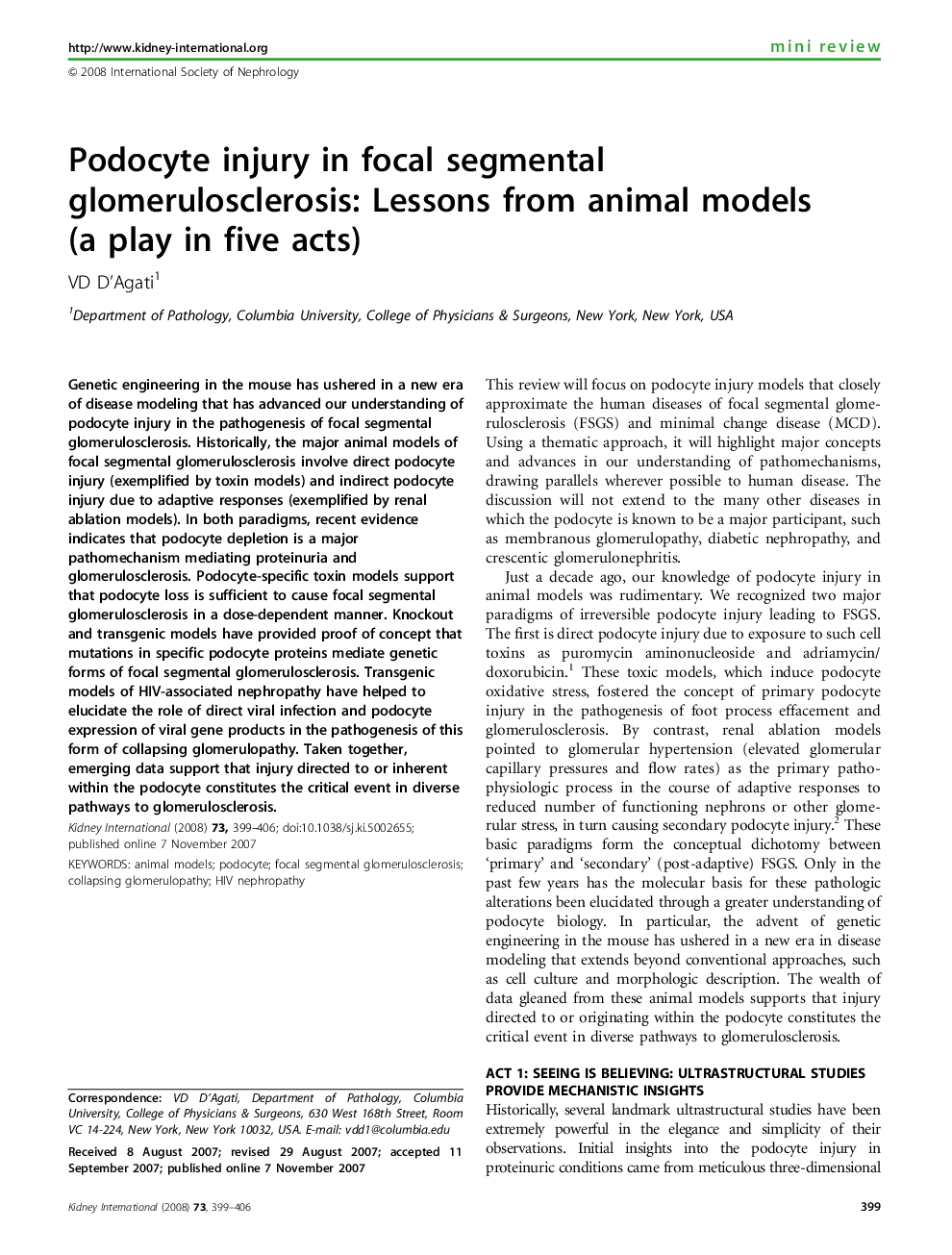| کد مقاله | کد نشریه | سال انتشار | مقاله انگلیسی | نسخه تمام متن |
|---|---|---|---|---|
| 3886725 | 1249560 | 2008 | 8 صفحه PDF | دانلود رایگان |

Genetic engineering in the mouse has ushered in a new era of disease modeling that has advanced our understanding of podocyte injury in the pathogenesis of focal segmental glomerulosclerosis. Historically, the major animal models of focal segmental glomerulosclerosis involve direct podocyte injury (exemplified by toxin models) and indirect podocyte injury due to adaptive responses (exemplified by renal ablation models). In both paradigms, recent evidence indicates that podocyte depletion is a major pathomechanism mediating proteinuria and glomerulosclerosis. Podocyte-specific toxin models support that podocyte loss is sufficient to cause focal segmental glomerulosclerosis in a dose-dependent manner. Knockout and transgenic models have provided proof of concept that mutations in specific podocyte proteins mediate genetic forms of focal segmental glomerulosclerosis. Transgenic models of HIV-associated nephropathy have helped to elucidate the role of direct viral infection and podocyte expression of viral gene products in the pathogenesis of this form of collapsing glomerulopathy. Taken together, emerging data support that injury directed to or inherent within the podocyte constitutes the critical event in diverse pathways to glomerulosclerosis.
Journal: Kidney International - Volume 73, Issue 4, 2 February 2008, Pages 399–406